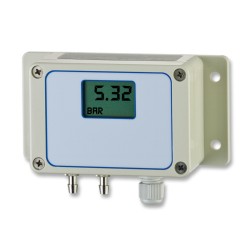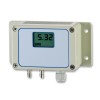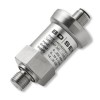 Pressure sensors, digital pressure gauges, manometers, calibrators and data loggers for measuring pneumatic air pressure.
Pressure sensors, digital pressure gauges, manometers, calibrators and data loggers for measuring pneumatic air pressure.
This guide will help you select the appropriate instrumentation for your air measurement application.
Choose a product type to browse the range of sensors and instruments for displaying and sending air pressure measurements.
 Draft Pressure Sensors - Low range pressure transducers and transmitters for measuring draft air pressure in air handling systems.
Draft Pressure Sensors - Low range pressure transducers and transmitters for measuring draft air pressure in air handling systems. Air Pressure Transmitters - Air pressure transmitters with a 4-20 mA loop output for measuring system air pressures.
Air Pressure Transmitters - Air pressure transmitters with a 4-20 mA loop output for measuring system air pressures.
Related Help Guides
- Measuring the difference in air pressure between rooms
- Calibration Hand Pump performance depends on test volume

